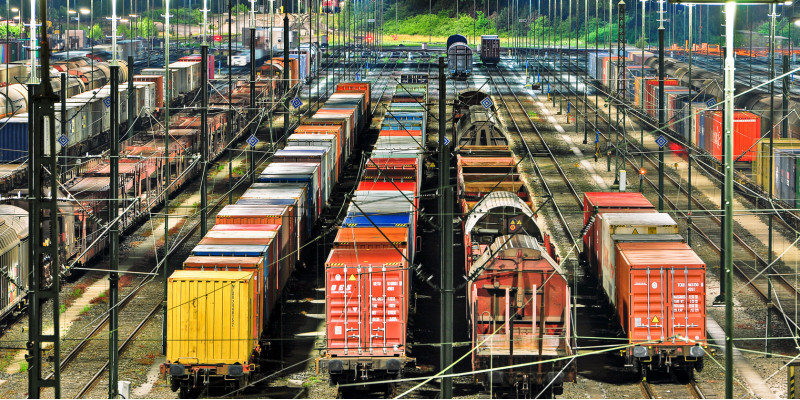Forecasts by the Federal Ministry of Transport claim that if growth in transport continues at its present rate, the amount of freight moved in 2030 will have increased by 38 per cent compared to 2010. “Clearly this kind of growth is not without its consequences for the environment”, said Ms Krautzberger. Rail freight transport is essential to boosting climate protection in the freight traffic sector, according to the study entitled "Klimaschutzbeitrag des Verkehrs bis 2050“ [Climate Change Mitigation in Transport until 2050 – English-language summary pages 37-56]. If the appropriate framework conditions are put into place, rail transport performance can be increased by a factor of more than two and a half by 2050 (compared to its current level). Even then, 60 per cent of freight transport would remain on the roads. Achieving a zero-emission transport system requires the substitution of fossil fuels in heavy-duty vehicles.
The study entitled „Finanzierung einer nachhaltigen Güterverkehrsinfrastruktur“ [Financing of a sustainable freight transport infrastructure] details two approaches to raising the share of rail transport performance by 2030. Firstly, user financing must be extended, making the HGV toll applicable for the entire road network and to all types of heavy goods vehicles. Secondly, external costs must be priced into the toll, in particular the cost of greenhouse gas and noise emissions. For the rail system this would mean an increase and further differentiation of track access charges based on noise. Furthermore, the study recommends a more rapid expansion of railway infrastructure and the infrastructure for multimodal transport. “The current draft Federal Transport Infrastructure Plan (BVWP) sends out all the wrong messages because it grants preference to road transport over the next 15 years”, said Ms Krautzberger. “The German Environment Agency recommends making greater investments in the rail system than the 42% currently budgeted in the BVWP.”
The study claims that ambitious measures could increase the share of rail freight transport from 18 to 23 per cent by 2030. These measures would have great effects, whereas a business-as-usual scenario would result in even more greenhouse gas emissions by 2030 than in 2010. In contrast, a modal shift to the rail, together with the introduction of CO2 limits for new heavy duty vehicles, could reduce emissions by 17 per cent in 2030, compared to 2010. “The proposed measures will strengthen the German economy”, said UBA’s President. “Our study predicts slight growth in both employment and value added, despite the fact that road freight transport will become costlier as a result of the charging of environmental costs.”
The „Klimaschutzbeitrag des Verkehrs bis 2050“ [Climate Change Mitigation in Transport until 2050] study also illustrates how the transport sector can reduce its overall greenhouse gas emissions to zero by 2050. Maria Krautzberger said: “Achieving zero emissions requires a complete renunciation of fossil fuels – for all modes of transport.” The key element is an energy transition in the transport sector: wherever possible, vehicles should be powered by electricity and electricity from renewable energy sources should be used. This is not possible with some modes of transport, for example airplanes and ocean carriers. Fuels such as renewable energy-based power-to-liquid (PtL) or power-to-gas (PtG) could be used for this purpose.
The study investigated the use of PtL in diesel engine heavy duty vehicles and catenary hybrid trucks in road freight transport. It concludes that both options make “zero emissions” possible in the freight transport sector by 2050. Of the two options, catenary hybrid trucks require far less power from renewable sources. The authors claim that greater cost effectiveness is achieved when an earlier modal shift to the rail has already significantly cut the demand for energy in the transport sector. Therefore, a transport transition must go hand in hand with an energy transition. Germany’s climate protection targets can only be reached with a greenhouse gas-neutral transport sector.
 Click to enlarge
Click to enlarge
